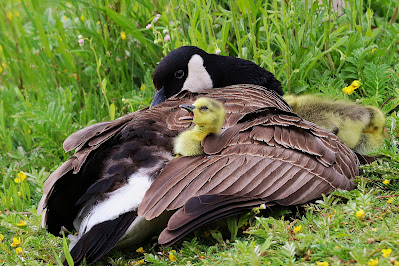May Life in Canatara!
Magnolia Warbler, male, in spring breeding colours!
Baltimore Oriole nest construction: The female weaves the nest, usually 3 to 4 inches deep with a small opening, 2 to 3 inches wide on top and a bulging bottom chamber, 3 to 4 inches across where her eggs will rest. She anchors her nest high in a tree, first hanging long fibers over a small branch, then poking and darting her bill in and out to tangle the hank. While no knots are deliberately tied, the random poking makes knots and tangles. Construction materials can include grass, strips of grapevine bark, wool, and horsehair. Females often recycle fibers from an old nest to build a new one. Males occasionally bring nesting material, but don't help with the weaving. Building the nest takes about a week, but windy or rainy weather may push this as long as 15 days.
https://www.allaboutbirds.org/guide/Baltimore_Oriole//lifehistory
Busy Mom to be, hard at work!
Sleepy time for some new Goslings!
Indigo Bunting eating seeds and insects on the trail.
Eastern Kingbirds have quite a reputation for chasing other species, especially during nesting season! Their scientific name is Tyrannus tyrannus!
Eastern Chipmunks spend much of their time on the ground, but are also accomplished climbers! They enjoy fruits, berries and nuts which make up the majority of their diet. Insects, fungi, grasses, bird eggs and frogs are also eaten. They play an important role in seed dispersal of many tree and shrub species as well as spores for beneficial fungus growth. In addition, they are an important source of food for predators such as birds, snakes, weasels, foxes and other carnivores!
https://factanimal.com/chipmunk/
























































